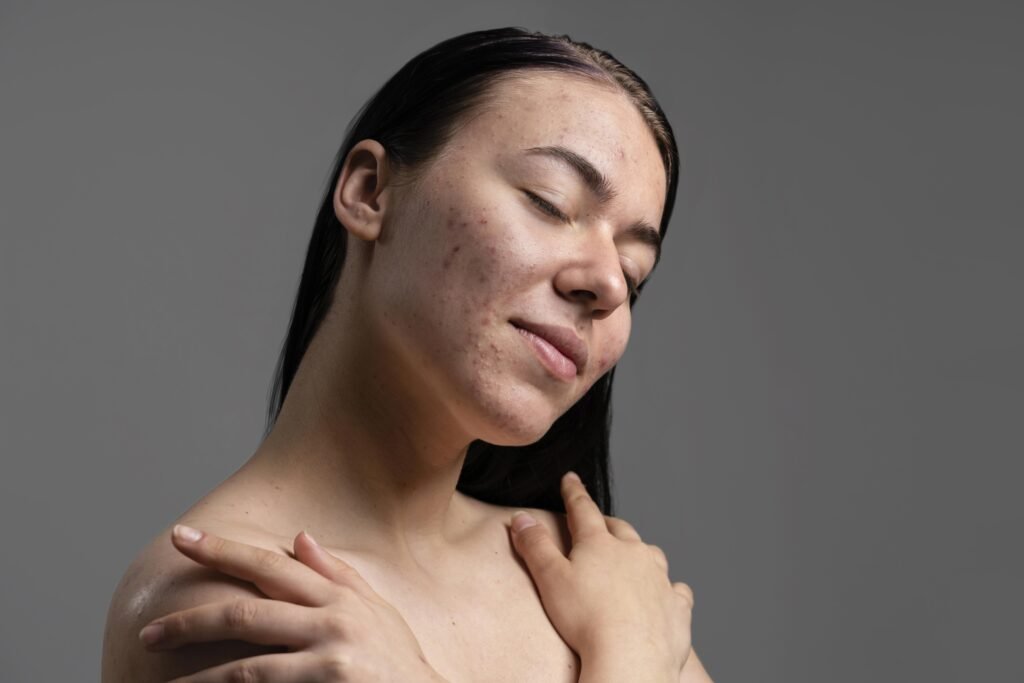Skin diseases are a vast and varied group of conditions that can affect people of all ages and backgrounds. From the common itch of eczema to the serious threat of skin cancer, these diseases can cause a wide range of symptoms and have a significant impact on our daily lives. Understanding the different types of skin diseases, their causes, diagnosis, and treatment options is crucial for maintaining healthy skin and seeking appropriate care when problems arise.
What are skin diseases?
Our skin, the body’s largest organ, is much more than just a protective layer. It helps regulate fluids, shields us from germs, and even makes vitamin D. However, various conditions can clog, irritate, or inflame this vital organ, leading to rashes and other noticeable changes. These are what we call skin diseases.

What are the most common types of skin diseases?
Not all skin diseases are created equal. While some cause minor inconveniences, others can have severe symptoms. Some of the most common include:
Acne:
Blocked skin follicles erupt with oil, bacteria, and dead skin buildup.
Alopecia areata:
Hair loss occurs in small, patchy areas.
Atopic dermatitis (eczema):
Dry, itchy skin becomes inflamed, swollen, cracked, or scaly.
Psoriasis:
Skin becomes thick and scaly and may swell or feel hot.
Raynaud’s phenomenon:
Reduced blood flow leads to numbness and discoloration in fingers, toes, or other areas.
Rosacea:
Facial skin becomes flushed and thick and develops pimples.
Skin cancer:
Abnormal skin cells grow uncontrollably.
Vitiligo:
Patches of skin lose pigment, causing lighter areas.
What are some types of rare skin diseases?
While genetics play a role in many common skin conditions, there’s a whole world of rarer diseases passed down through families. These can cause a variety of unusual symptoms. Here are a few examples:
Actinic prurigo (AP):
An intensely itchy rash appears in response to sunlight exposure.
Argyria:
Silver accumulates in the body, leading to a noticeable change in skin color.
Chromhidrosis:
Sweat itself becomes colored, ranging from brown or yellow to blue, green, or even black.
Epidermolysis bullosa:
This connective tissue disorder results in fragile skin that blisters and tears easily.
Harlequin ichthyosis:
Newborns are born with thick, hard patches or plates on their skin.
Lamellar ichthyosis:
A waxy skin layer sheds in the first few weeks of life, revealing red, scaly skin underneath.
Necrobiosis lipoidica:
A rash develops on the lower legs, potentially progressing into ulcers (sores).
Symptoms and Causes
What causes skin diseases?
A variety of factors can impact your skin beyond just what you slather on it. While bacteria in pores, fungus, and parasites can cause issues, underlying health conditions like thyroid problems or diabetes can also manifest on your skin. Even medications you take can have an effect. Genetics plays a role, too, as does contact with irritants or allergens. Remember the sun! Excessive sun exposure is a common culprit behind skin problems.
What are the symptoms of skin diseases?
While the occasional blister from ill-fitting shoes isn’t necessarily a cause for concern, unexplained changes in your skin can be a sign of something more serious. Skin diseases can manifest in a variety of ways, with symptoms ranging from dry, flaky patches to painful, oozing sores. Discoloration, redness, and bumps are also common. If you experience any of these symptoms and can’t pinpoint a clear cause, it’s best to consult a doctor to rule out any underlying conditions.
Diagnosis and Tests
How is a skin disease diagnosed?

In many cases, a dermatologist can diagnose your skin condition simply by examining your skin. However, if a visual inspection isn’t conclusive, further tests might be needed. These tests can involve taking a small sample of skin for a biopsy, which is then examined under a microscope. Alternatively, a culture might be used to identify bacteria, fungi, or viruses present on the skin. To pinpoint allergies, a skin patch test involves applying small amounts of various substances to see if they trigger a reaction. For certain infections, a black light examination (Wood’s light test) utilizes ultraviolet light to reveal changes in skin pigment. Another technique, called diascopy, involves pressing a microscope slide against a suspicious area to see if the color changes, helping differentiate certain conditions. Additionally, a dermatologist might use a specialized tool called a dermatoscope to get a magnified view of skin lesions for diagnosis. And finally, a Tzanck test analyzes fluid from a blister to diagnose herpes simplex or herpes zoster.
Management and Treatment
How are skin diseases treated?
The good news is that many skin conditions are treatable. A dermatologist or other healthcare professional can recommend various options depending on your specific diagnosis. Treatment might involve antibiotics to fight infection, antihistamines to combat itching, or medicated creams to soothe irritation. Moisturizers can also be helpful. In some cases, oral medications, steroid injections, or even laser resurfacing might be necessary. Lifestyle changes can also significantly improve your skin. This could include dietary adjustments recommended by your doctor, stress management techniques, and a consistent skincare routine. Additionally, kicking bad habits like smoking and excessive alcohol consumption can benefit your overall health, including your skin.
Prevention
Are there conditions that put me at higher risk of developing a skin disease?
While your skin is often the first thing people notice, it can also act as a window into your overall health. Certain underlying conditions can raise your risk of developing skin woes. For instance, diabetes can make wound healing a challenge, especially on your feet. Likewise, medications used to manage inflammatory bowel disease (IBD) may trigger skin issues like eczema or vitiligo. Even common life experiences can leave their mark. Pregnancy can bring on melasma, a pigmentation disorder. Stress can exacerbate conditions like acne, alopecia areata (hair loss), rosacea, or Raynaud’s phenomenon (affecting blood flow in fingers and toes). So, if you notice any changes in your skin, it’s not just a cosmetic concern; it might be your body sending you a signal.
How can I prevent skin diseases?
While our genes or autoimmune responses predetermine some skin conditions, there’s good news for those caused by contagious invaders. By adopting a few healthy habits, you can significantly reduce your risk of catching these skin diseases or lessen their severity. Make sure to wash your hands frequently with soap and water, especially after being in public spaces. Don’t share personal items like utensils, cosmetics, or towels. Disinfect gym equipment before use and avoid harsh chemicals or irritants that might aggravate your skin. Keeping your body healthy from the inside out is also important. Aim for a nutritious diet, drink plenty of water, and get enough sleep (7-8 hours a night). Finally, sun protection is key! Regularly applying sunscreen helps prevent sunburn and other sun damage, keeping your skin healthy and happy.
Prognosis
Do skin diseases usually return after treatment?
Skin conditions can be a mixed bag. While some clear up on their own, others require ongoing management. The good news is that even chronic conditions can often be controlled. Treatment can significantly reduce symptoms, allowing you to live comfortably. Depending on the specific condition, this might involve medication, creams, or other therapies. It’s important to be consistent with your treatment plan, even during periods of remission (when symptoms disappear). This helps prevent flare-ups and keeps your skin healthy in the long run.
When to see a doctor?
Signs that your rash needs medical attention
Although most rashes are not life-threatening, some can be a sign of a more serious condition. Board-certified dermatologists say rashes with these features need medical attention: a rash over most of your body, a rash that blisters or turns into open sores, or raw skin.


